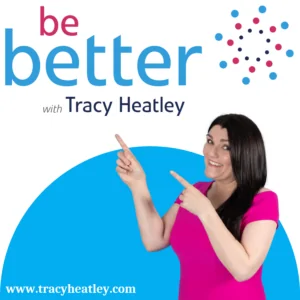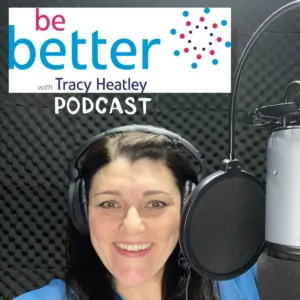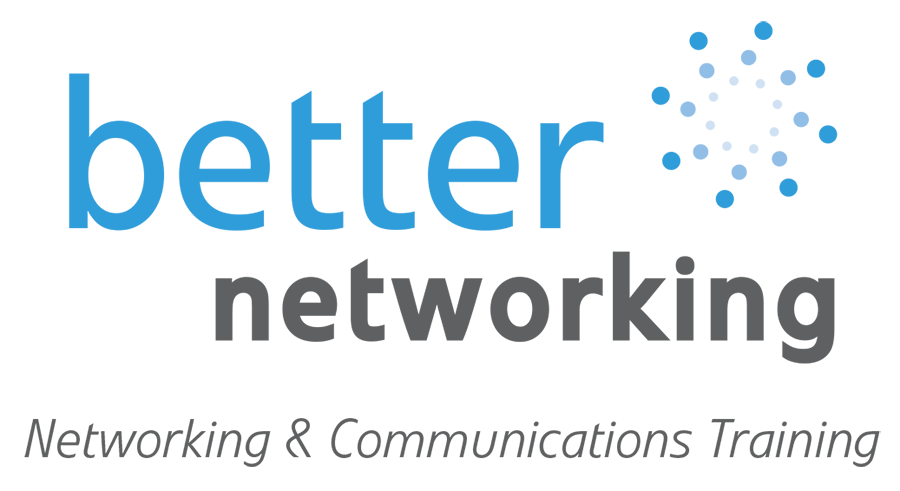Direct response versus brand marketing is the topic of this podcast episode, Chartered Marketer and small business marketing specialist, Tracy Heatley talks about direct response versus brand marketing for small businesses. Along with tips on how to apply them to your small business marketing. Here is the transcript of the podcast.
Introduction
Hi, I’m Tracy Heatley. Thank you for listening to my Be Better With Tracy Heatley podcast.
This is a business and marketing podcast for small business owners. Each week, I cover a different topic. This week, it’s all about imposter syndrome.
I briefly mentioned direct response versus brand marketing in episode 21, which was all about how imposter syndrome can impact marketing. I also promised to cover the differences between direct response and brand marketing.
Overview
We hear a lot about brand awareness, and these days with social media platforms, it’s easier than ever before to create a strong corporate and personal brand. Generally, though, brand awareness marketing is much more expensive than direct response marketing. Direct response marketing is great if you want to reach your target market to generate new lead.
For small businesses, especially if you have a limited marketing budget, often it’s best to start with direct response marketing. Then, focus on brand marketing later. There’s no harm in building your brand through social media, at the same time, but I’d urge you not to start costly public relations campaigns and brand awareness if you need a quick return on your marketing investment.
Response Requirements
You must think about what you want the response to be and make it clear through your marketing. If you don’t ask, you won’t get. It’s up to you to guide your potential customers to take action.
Think about what you want the response to be. It could be that you want to direct them to your website, to listen to your podcast, click on a social media advert to make a purchase or give you a call. These are just a few examples, but you get the gist.
Once you’ve decided what the direct response needs to be, remember to state the call to action on your marketing.
My Businesses
I have two businesses and generally I have different response requirements for both. For my BoB Clubs Northwest networking groups, our call to action is usually to book a visitor place for the networking group that our prospects would like to visit.
My Be Better With Tracy Heatley business, it varies depending on the service. Take for example, if someone is interested in marketing mentoring, then the direct response I’m looking for to book a session or sessions online. If it’s marketing consultancy, then I’d prefer them to call or message me through my website to arrange an informal chat.
What’s Relevant For Your Business?
Think about what’s relevant for your business. If you’ve got a number of different products or services within your portfolio, you may be running different marketing campaigns for different things.
If you’re new to direct response marketing or your want to boost your results, try different approaches, with different marketing messages and make sure that you put things in place, so that you can monitor and evaluate everything.
Don’t just reply on the fact that you’ve had more sales or enquiries, for example. Make sure you know which specific form of direct response marketing has generated the results. There are various techniques you can use to monitor and evaluate your direct response marketing, which I’ll cover in a future episode or in one of my Better Marketing blogs.
Costs Of Direct Response Versus Brand Marketing
Essentially the objective of direct response marketing is to get a quick response, which is why it’s generally less expensive than brand awareness marketing. Plus, it’s much easier to monitor.
Whilst I think that there should be a good mixture of both forms of marketing, it’s important to be aware that brand marketing can be much more costly and difficult to monitor the effectiveness.
Brand Awareness
Create brand awareness by putting your branding on as many forms of marketing as you can. Make sure that everything that you put out on social media has your branding firmly in place. Never miss an opportunity to do this because brand awareness can be very subliminal.
My rule of thumb is usually that you want your target market to see you brand in at least seven diverse ways. However, if you’re on a limited budget or you want to monitor and evaluate your progress start with one or two marketing communications channels and increase them as you go.
The time frame that we have to capture people’s attention has reduced dramatically from what it once was. With so many different forms of marketing communications being directed at us every minute, especially online, grabbing the attention of someone is more difficult than ever before. We probably have about eight seconds to grab someone’s attention, so make sure that when you do, you make it count. Make sure your branding is clear.
Emotion
Whether you’re targeting consumers or businesses, we’re all driven by emotion. Our buying decisions are made by the amygdala part of the brain that controls our limbic system. This is all to do with emotions. Be it positive or negative.
This is one of the main reasons that brand marketing works, but only if there is a positive connotation linked to your brand. A brand that is seen often and generates a positive emotion within our limbic system in our brains is more likely to develop trust a subliminal level too.
As a Neuro Linguistic Programming Master Practitioner, known as NLP for short, I personally have a deep fascination with neuroscience linked to neuromarketing and buyer behaviour. But I best not get carried away with all that.
My point is that you need to generate a strong positive emotion to your brand but be aware that it can take time and you may not know how effective it is.
Example
Let me give you an example, as well as producing my weekly podcast, I love to write blogs for my website. It’s an excellent way of exemplifying that I know what I’m talking about. It adds content to my website. Importantly, too, it creates brand awareness. Plus, I find it quite cathartic! I love nothing more than writing and being able to share my wealth of knowledge with others.
I’m often gobsmacked when I see how many people have viewed my blogs. Especially when they get thousands of people reading them. I’ve even had many messages from small business owners saying how useful they find them. Yes, my brand is plastered all over them.
Be Brand Dominant
Ideally, you want your brand to be the dominant one, so that your business is the first thing that springs to mind when there is a requirement for your product or services. This is why it’s important that your brand is seen and heard through multiple channels. It’s also why you’re unlikely to get instant results.
It may mean that you’re drip feeding your marketing and creating brand awareness through multiple channels. It’s like laying the foundations for the future, so that you’re the ‘go to’ brand of choice.
Build Both
Over time, it’s important to build both direct response and brand awareness. Always remember, though, that with brand marketing you have to be in it for the long haul.
Conclusion
I hope this podcast helps with an understanding of the difference between direct response versus brand awareness marketing.
If you’re still uncertain about what’s the best marketing direction for your business or you have any queries whatsoever to do with marketing for your small business, please do get in touch with me.
You can contact me through my website, which is Tracy Heatley.com or email me at info@tracyheatley.com and I’ll be happy to help.
There’s lots of free resources on my Tracy Heatley.com website that you may find useful to. These include book reviews, blogs and more podcast episodes.
You can also have the chance of winning a free 40-minute online marketing mentoring session. All you have to do is leave me a review and subscribe to my podcast. Head to my website and send me the review via the contact me page.
a review and subscribe to my podcast. Head to my website and send me the review via the contact me page.
I’m Tracy Heatley and thank you for listening to my Be Better With Tracy Heatley podcast.
Better Business, Better You

